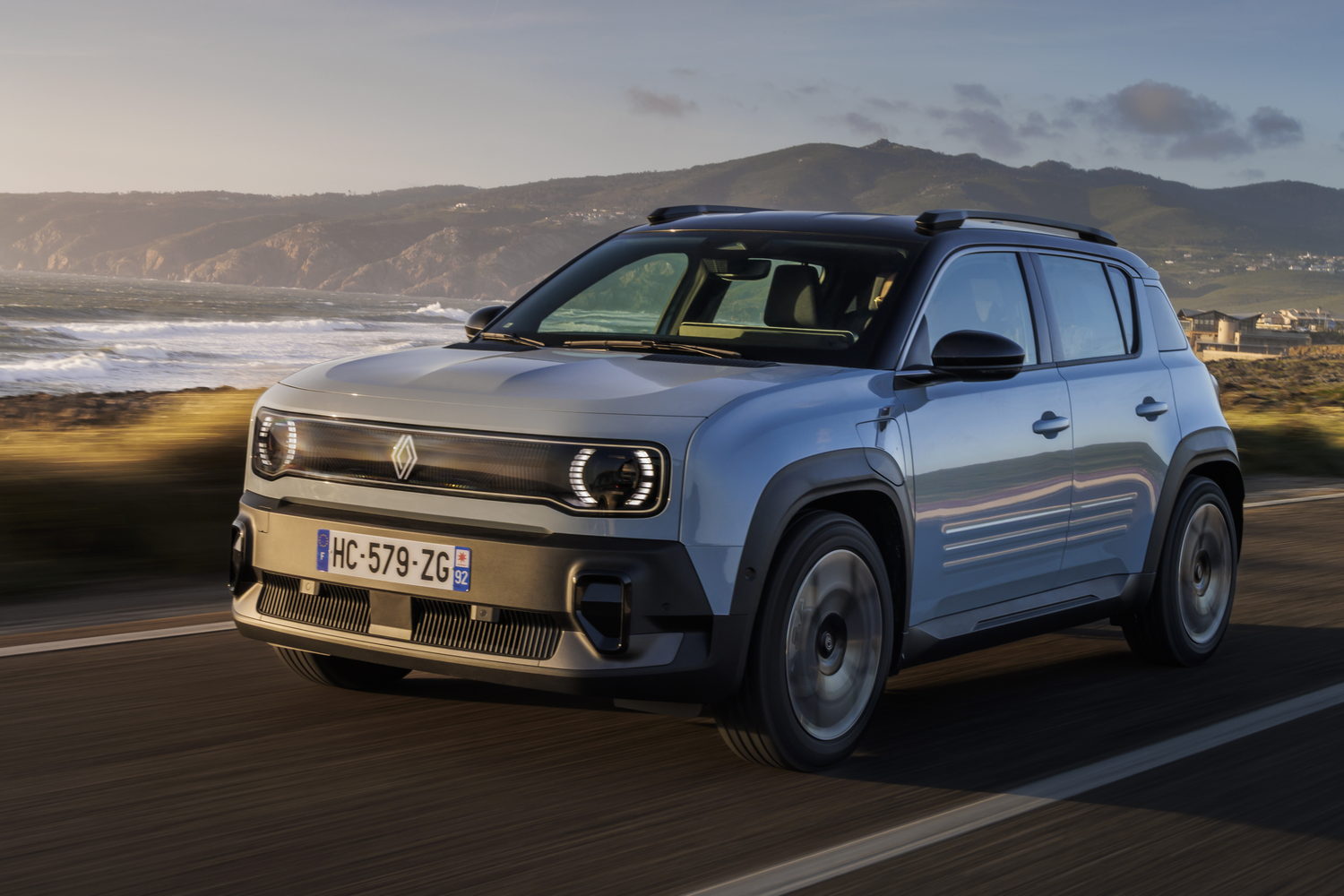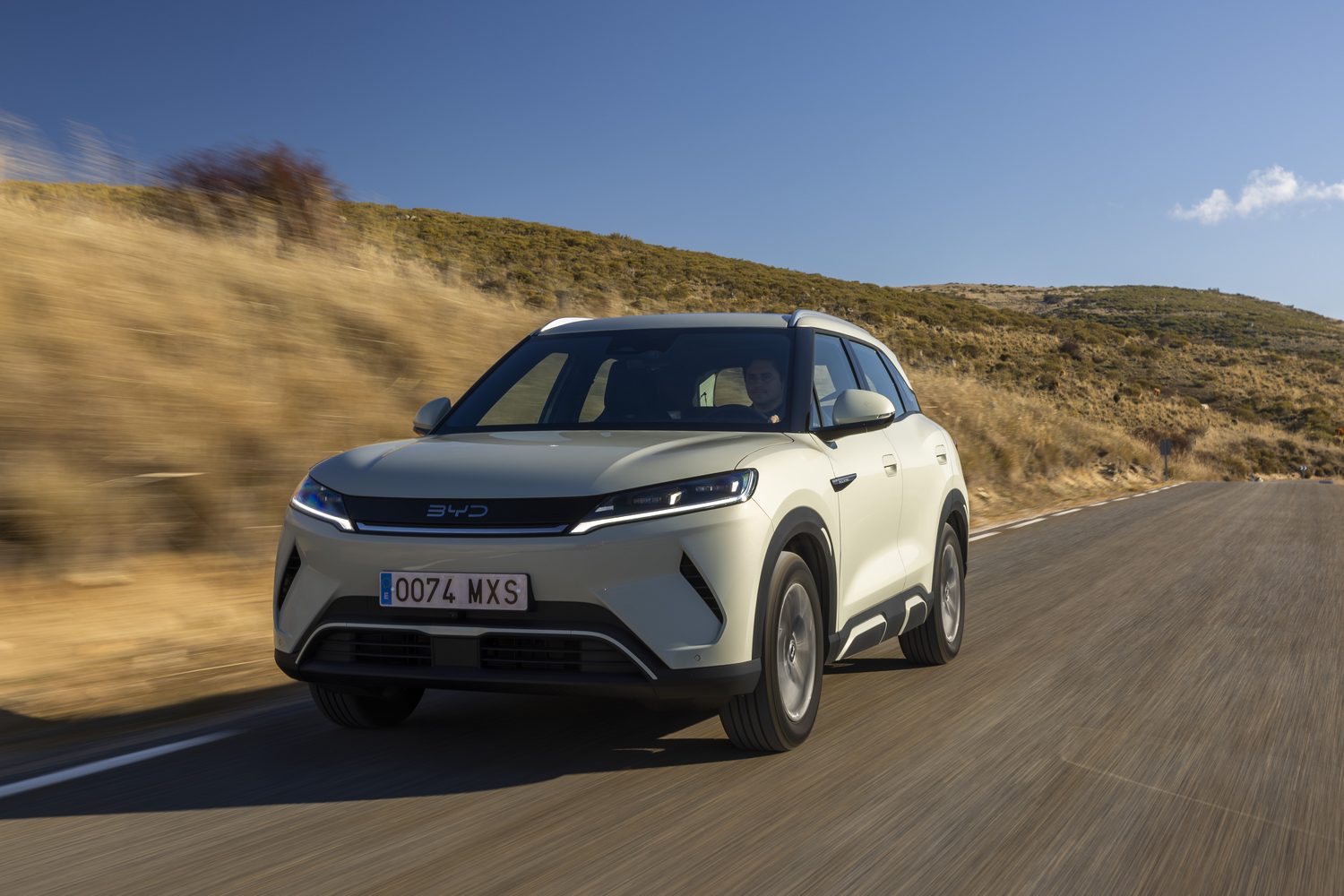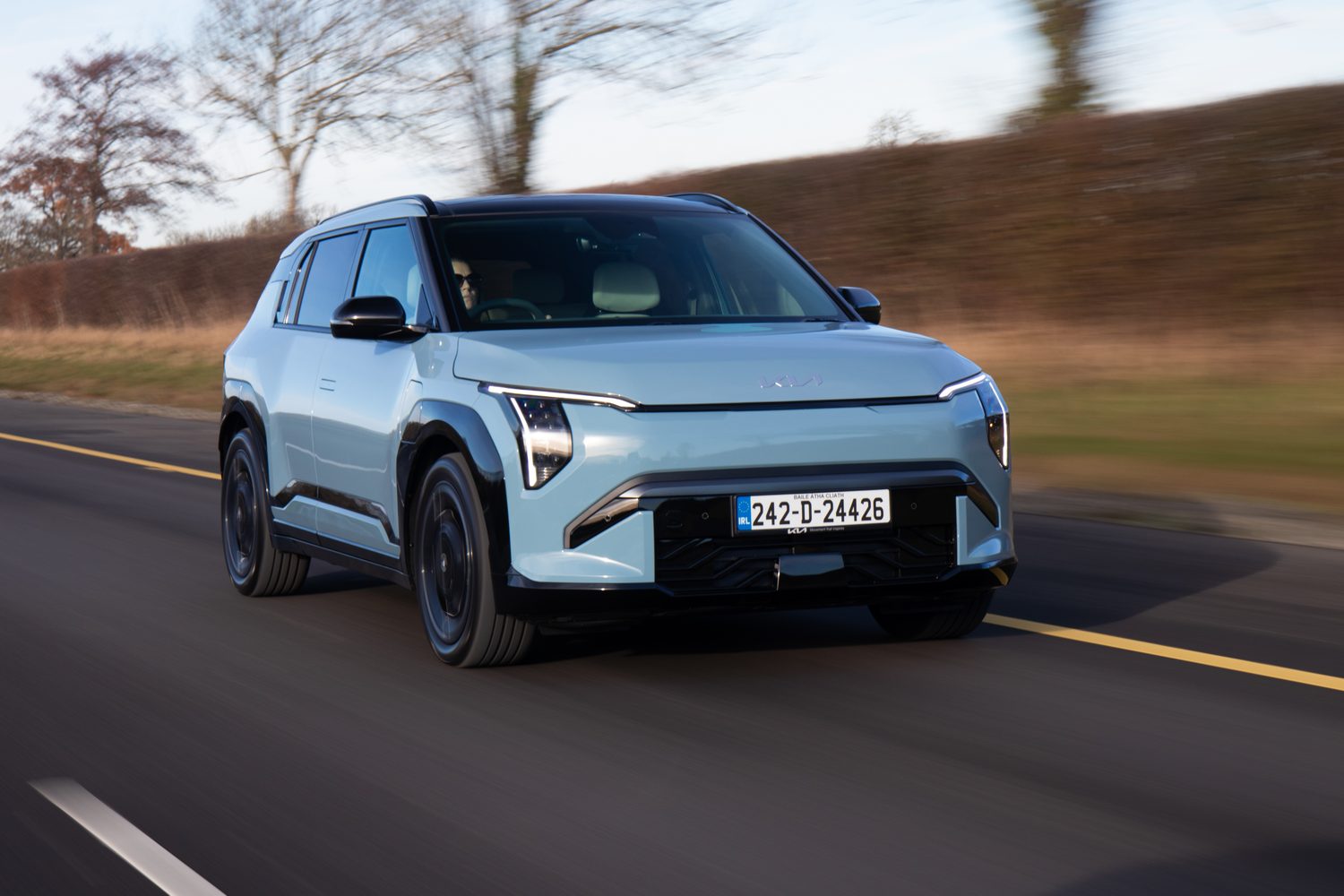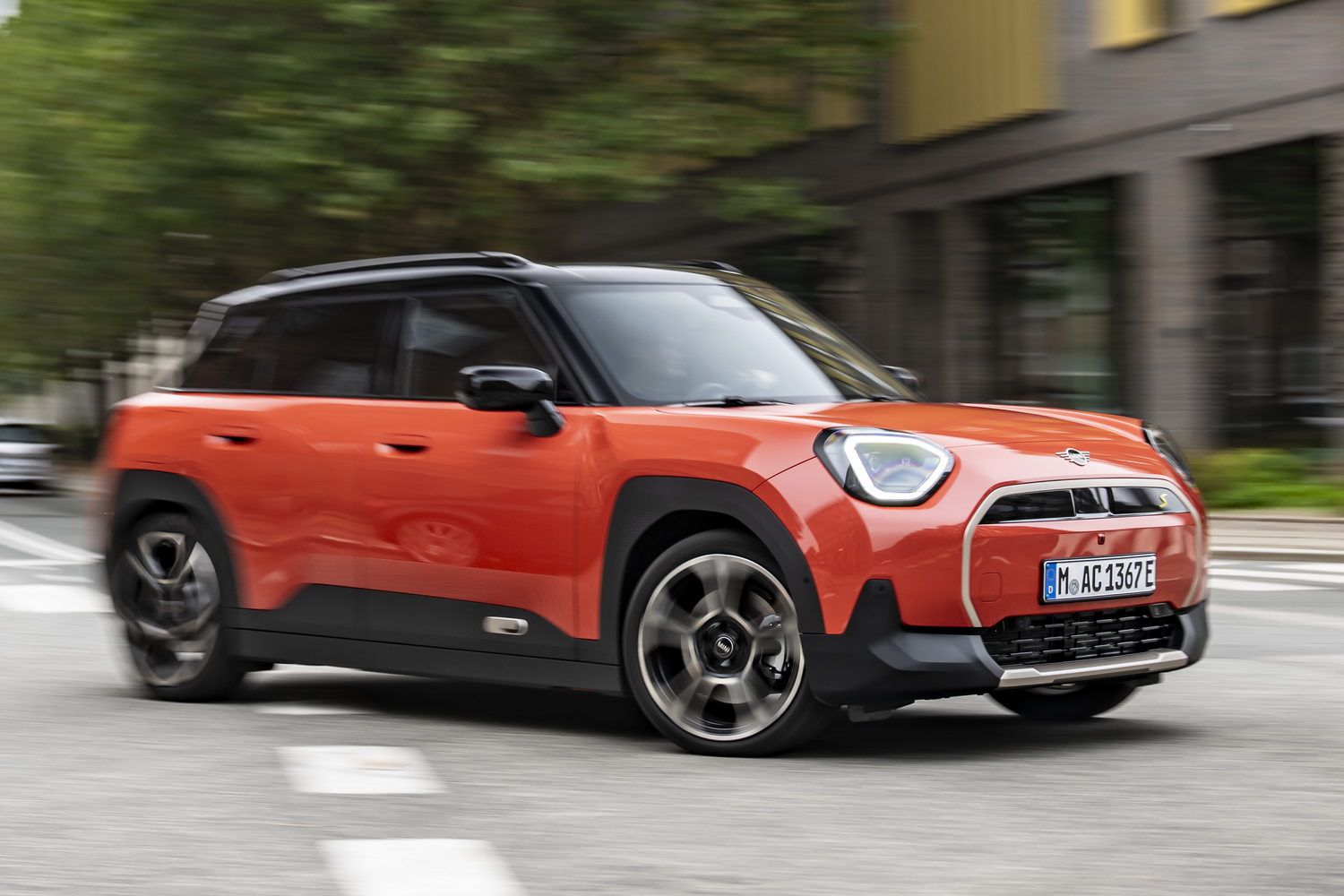Introduction to the 2025 Renault 4 E-Tech
Having utterly knocked it out of the park with the new electric Renault 5 E-Tech, the French company is back with another heritage-inspired EV, the new Renault 4 E-Tech electric. The R4 is a taller, roomier, more practical hatchback than the R5, with some SUV overtones, but it uses the same basic electric architecture as the Renault 5 E-Tech.
It's also paying homage to one of Renault's biggest ever successes, and one of the best-selling cars in the history of motoring. The original Renault 4 was built between 1961 and 1992 and found more than eight-million customers in that time. It was built on four continents, and it was even made in Ireland - Renault used to build the 4 from CKD kits at a factory near Rosslare.
Almost all of those were yellow (the factory had a surfeit of yellow paint) and my own mother owned one. In fact, our bright yellow Renault 4, with its push-pull-twist gear shift and springy seats, is the first car I remember being driven in, and the first car I ever - technically - drove, sitting on my dad's lap at the age of eight, and turning the spindly steering wheel while he worked the pedals.

Can Renault bottle electric lightning twice, and match the star quality of the brilliant 5 E-Tech? Can it do so while offering genuinely better practicality, and still give us a useful driving range? And do all of that at a reasonable price? We tried it out for size at its international media launch in Portugal in a bid to answer these questions.
Pros & Cons of the 2025 Renault 4 E-Tech
Pros: Cool styling, engaging to drive, decent range, more space than the R5, affordable
Cons: Firm ride, some wind noise at speed, some fiddly ergonomics
Exterior & Design of the 2025 Renault 4 E-Tech

• Successful blend of retro and modern
• Lots of optional colours and decals
• Not quite as striking as the R5, but we'll forgive it that
As with the Renault 5 E-Tech, the Renault 4 is delving deep into the company's back catalogue. As with the 5, the 4 tilts its head firmly in the direction of the styling of the original, while still maintaining a modern shape. It's also quite a compact car, in spite of being 80mm longer than the 5 in terms of its wheelbase, and with an extra 120mm of rear overhang.

The Renault 4's dimensions are:
Length: 4,144mm
Width: 1,808mm
Height: 1,552mm
Wheelbase: 2,624mm
Those measurements put the Renault 4 pretty close to the current Captur, although the 4 has slightly more generous ground clearance, with 181mm under the bodywork. Is it an SUV, though? That's debatable at best. There are those who claim that - given its height and shape - the original Renault 4 was also the original - if unintended - crossover.

This new one certainly has SUV overtones, with its ride height, chunky wheel arches, the black plastic lower sections and the fact that it's been designed to be to the Renault 5 what the Captur is to the Clio. However, I reckon that the 4 is still more of a hatchback than an actual SUV.
While the two-box silhouette and overall shape are quite modern, it's in the details that the new 4 apes the old. Its grille, for example, mirrors the oblong shape of the later versions of the original, replacing chrome trim with LED light (the longest unbroken LED light strip in the car industry, claims Renault) and of course using LEDs for the headlights too.
There's also a light-up Renault badge, although if you buy the most basic version, the LED surround is replaced with a simple, white-painted strip.

The creases in the bonnet and the way the front edge of the wings curve down to the bumper certainly look like homages to the original 4, while along the sides there's an angled graphic - with lots of different colour and badge options - which mimics the shut-line of the Renault 4 of the 1960s.
There are also small corrugations along the lower edges of the door, in the style of the original Renault 4 GTL model, while above the rear wheel sits a trapezoidal section of side glass, just as on the original. There's even a reverse-rake line for the trailing edge of the door glass.
Around the back, there's a strip of black plastic that recreates the chrome trim of the first Renault 4 on the boot, above the numberplate, but the best bit of classic-turned-new styling, to my eyes anyway, are the brake lights, which carry over the lozenge shape of the original's but with sections of slim LED lights instead of weak-willed old incandescent bulbs. They look particularly brilliant.

The Renault 4 E-Tech's colour schemes are a little more pastel, and a little less strident, than those of the Renault 5, but there are some very nice colours, especially the Haute-De-France Green, and Carmine Red.
There are 18-inch alloys as standard and - late this year, or early in 2026 - you'll be able to pick the Renault 4's ultimate option - the 'Plein Sud' full-length canvas sunroof, directly inspired by the cars of the 1960s, and a full metre in length. We haven't had a chance to drive a Renault 4 with this roof, but we have sat in one on a sunny day, and it's frankly fantastic.
Interior, Practicality, Tech & Comfort of the 2025 Renault 4 E-Tech

• Roomier than the R5 of course
• Impressive cabin tech and quality
• Rear-seat space decent for class
Unsurprisingly, the Renault 4 is roomier inside than the Renault 5. This is no shock as it's designed to be the bigger, more practical sibling to the 5, with its 80mm longer wheelbase - although it's not exactly massively spacious. Adequate is more like it, certainly for adult-sized, rear-seat passengers, and space for bigger feet is at a premium unless those in the front are prepared to raise up their adjustable seats. On the upside, the rear seat is comfortable and nicely upholstered.

Up front, the R4 is much like the 5. It uses the same digital screens, the same steering wheel and the same profusion of column stalks (three on the right-hand side). There's a seven-inch digital instrument screen for the cheapest versions, but most will come with a ten-inch version, and all will get the ten-inch infotainment screen with Google-based software.
This is easy enough to use (although the display area seems a bit shallow at times), and it's made easier still by the retention of physical buttons for the air-conditioning system.

Overall quality is very good, even allowing for a few cheaper plastics lower down in the cabin, and the 4 gets the same soft, quilted material on the passenger side of the dashboard as the R5, which looks and feels nice. For some versions, the seats are upholstered in a denim-style material, complete with faux rivets, a nod to the fact that the original Renault 4 was described as the 'Blue Jeans' car - rugged and classless.
In the boot, there's considerably more load space than you'll find in the R5, with 420 litres available up to the luggage cover, plus another 55 litres under the floor for cable storage, which also includes a lift-out plastic section which is easy to clean.

There are two handy stretchy straps at either side of the boot for holding taller items in place, as well as the usual hooks and tie-down points. The rear seats fold flat, opening up more than 1,400 litres of load space, but they don't form a continuous floor with the boot, leaving a huge step up to the folded seatback. It's also a shame that right-hand-drive models can't benefit from the fold-flat front passenger seat offered in other countries, which allows 2.2-metre-long loads to be carried.
However, the load floor of the boot is very low, and this not only makes it easy to load heavier items in, but it also gives you a handy seat for picnics and the like. A powered tailgate is an optional extra.
Performance of the 2025 Renault 4 E-Tech

• Firm, but comfortable ride quality
• Quick steering
• Same electric powertrains as the R5
We haven't had a chance to sample the Renault 4 E-Tech with its entry-level 120hp electric motor, but the 150hp version provides more than enough performance. It's best driven in Comfort mode, accessed by a handy button on the steering wheel, as Eco limits your top speed to 110km/h, and Sport doesn't really seem appropriate to this car.

In Comfort, there's a detente at the bottom of the accelerator pedal through which you need to push to activate a kick-down-style burst of maximum acceleration. Before that point, the R4 is pleasantly brisk. Past that point, the R4 is... slightly more pleasantly brisk. It's not a fast car - as evidenced by the 8.3 seconds to 100km/h time - but it feels well balanced in its performance and it's hard to imagine family-focused customers wanting much more.
While the Renault 5 is sparky, engaging and good fun to drive, the Renault 4 is a more subdued. It's taller than the 5, of course, and a little heavier too (although not by very much, as it happens). The steering speed and suspension rates have been slackened off a little too.

The result of all that is a car that's pleasant and easy-going to drive, with just enough connection between the driver and the wheels that you can actually describe it as fun. The suspension's springs are quite stiff, but the damping is excellent, so although you feel the bumps, they won't jostle you around. The steering is light, but quick - possibly a little too sensitive at times - but it's easy to thread the 4 through a series of corners, building up an enjoyable rhythm as you go. I don't think you could describe it as a driver's car in the same sense as the Renault 5, but it's still satisfying to drive.
Unlike the 5, the 4 has a 'one-pedal' braking system, activated by steering wheel paddles, which allows the electric motor, at low speeds, to exert its drag on the car to bring it to a complete stop. It's a handy feature, but to be honest I don't think it's worth using, mostly because the Renault 4's brake pedal has firm and consistent responses and feels notably better than that of many other EVs. You're better off just doing your own braking.

Running Costs & Range of the 2025 Renault 4 E-Tech
• All EVs are cheap to maintain
• Good real-world efficiency
• Up to 11kW on AC charging
Renault, it seems, is moving away from its 22kW AC charging capability and towards the industry standard of 11kW on AC outlets instead. Which is a shame, as it's very handy - with models such as the Renault Scenic and Megane E-Tech - to be able to plug into a kerbside charging point and get what you might call a medium-speed charge.

On DC power, the Renault 4 can manage up to 100kW, which is fine but nothing special, and a 15-80 per cent battery charge takes around 30 minutes at that speed. The 4 is capable of vehicle-to-load charging, allowing you to run other electrical items via an adaptor, and vehicle-to-grid, although that ability is currently limited to France.
The official 408km range seems largely realistic. Over a day's mixed driving of motorway, town, city and country roads we managed to average slightly better than Renault's 15.1kWh/100km figure and in day-to-day driving you should see at least 360km between charges.
If you're heading out on the motorway, that will fall further, but that's par for the course. The Renault 4's compact 52kWh battery means that, on a night rate and charging at home, you should be able to top it up for as little as €5-6 per charge.

Renault Ireland offers an impressive five-year warranty, limited to 150,000km, while the battery is warrantied for eight years and up to 160,000km.
Irish Pricing & Rivals of the 2025 Renault 4 E-Tech
• Only slightly more expensive than the 5
• Two battery capacities available
• First Irish cars arrive in September

Irish prices for the Renault 4 E-Tech haven't yet been set, but we've been told that the basic model will 'comfortably' slot below €30,000. How comfortable that comfortably is remains to be seen, but the 4 won't be expensive, and we'd estimate a starting price close to €28,000 for the version with the 40kWh battery and the 300km range. Our Comfort Range test car will cost more than €30,000, and more again for the range-topping Iconic specification.
Standard spec will include single-zone air conditioning, 18-inch alloy wheels, the ten-inch touchscreen with Google software and a heat-pump heating system for better efficiency.
Verdict - Should You Buy the 2025 Renault 4 E-Tech?
Yes - you definitely should. While it's not as instantly gorgeous as the Renault 5 E-Tech, the 4 also blends retro and modern styling, and if it looks a little chunkier and more upright than the 5, well it's supposed to. It's also usefully more practical yet should still be competitively priced. Along with all that, it's delightful to drive, and sufficiently efficient to make switching to electric motoring pretty painless.

FAQs About the 2025 Renault 4
How many child seats fit in the back of the Renault 4 E-Tech?

There are just the two ISOFIX points in the Renault 4, both in the back seat. That's run of the mill for a car of this size, as is a middle rear seat that is pretty narrow, which means you will struggle to fit a third child in a booster seat.
What is the range of the electric Renault 4?
The Renault 4 E-Tech comes with two battery options - a 40kWh version with a 120hp electric motor and an official range of up to 308km. Then there's the Comfort Range model, which has a 52kWh battery, a 150hp motor and a range of up to 409km.
Where are Renault electric cars made?
In the case of the Renault 4, it's made at company's factory in Maubeuge in north-east France, the same factory in which the Kangoo van is made.
How safe is the Renault 4?
The R4 hasn't yet been tested by Euro NCAP yet, so we don't have an independent assessment of its safety, but it should do well. The Renault 5 gained a decent four-star rating from NCAP, so we'd expect the 4 to score about the same.
Want to know more about the Renault 4?
Is there anything else you'd like to know about the Renault 4? Or anything you feel we haven't covered here? Then just head over to our Ask Us Anything section and, well, ask us anything.




































